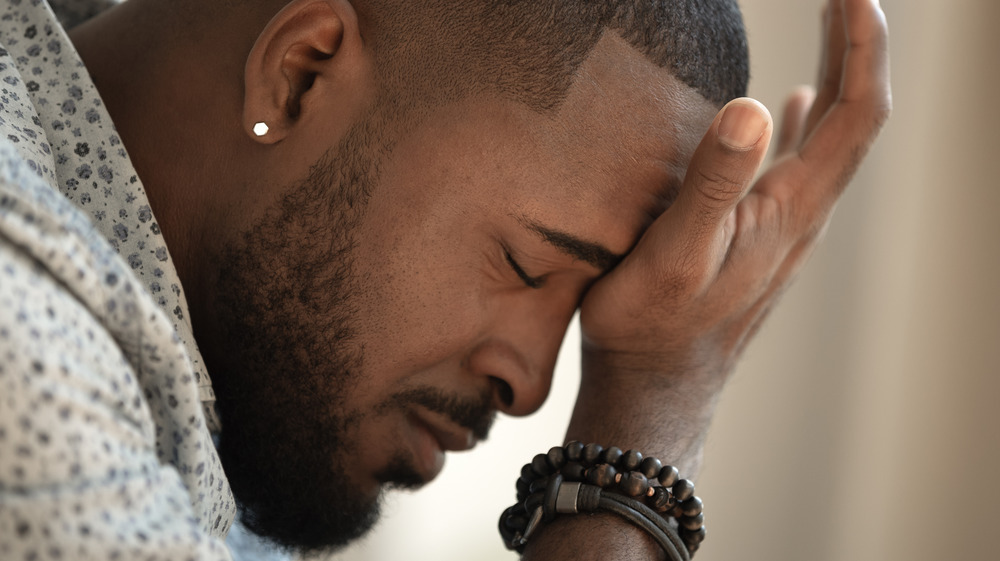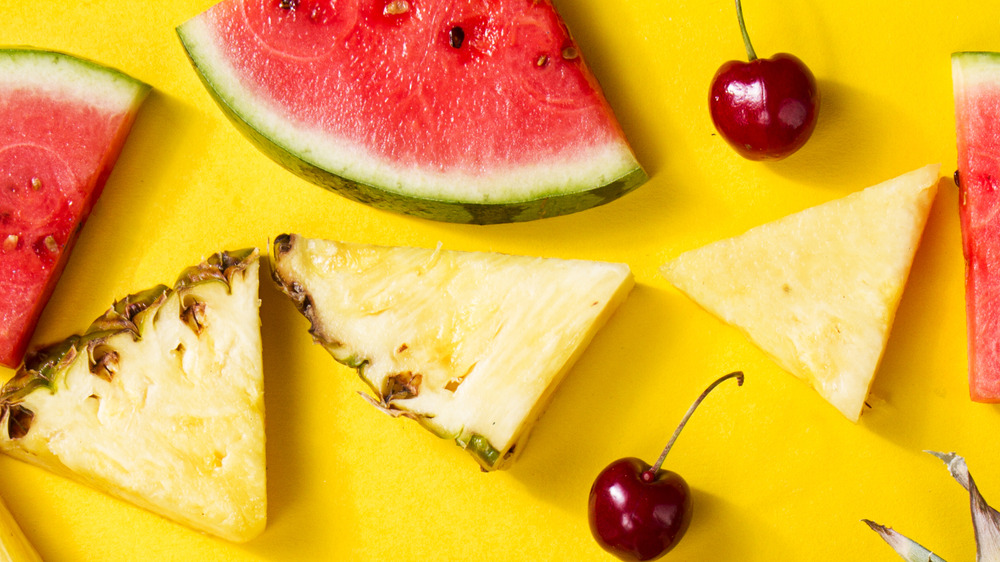The Best Food To Eat After You Get A Migraine
Migraines can destroy a person's entire day. Whether they wake up with one or it hits them later in the day, it eats up their energy and narrows down their focus to finding relief. And once the pain is gone, they're left drained and feeling, in many cases, like they're hungover. It's one of the big differences between headaches and migraines.
Migraine sufferers will be the first to tell you that different people all have different migraine triggers. And when it comes to post-migraine relief, just about everyone has their own combination of tricks that helps get them back on their feet. From hot showers to the right foods, post-migraine relief is almost its own ritual. Especially when it comes to food. But doctors have found a few menu staples that should help just about everyone.
The most important of these is, of course, water. The National Headache Foundation states that many headaches — particularly migraines — can be triggered by dehydration. And once the headache sets in, dehydration can make it worse. Dr. Sara Crystal, a neurologist specializing in headaches, also suggested consuming hydrating fruit when she spoke to Shape magazine in 2019. These include watermelon and pineapple, fruits with a high water content. There is one small downside to fruit, however. It contains fiber, which can reduce the absorption of certain medications, according to The Mayo Clinic.
Delicious relief
Dr. Crystal was not the only professional interviewed by Shape. Dr. Carolyn Williams also had a suggestion for people trying to get through the post-migraine haze: Cherries. It turns out that cherries contain a ton of anti-inflammatory properties that can help with the fluid retention and general stiffness that many people feel after they get over the worst of their migraines.
Those who also experience migraine-related nausea might have better luck with tea. Ginger or peppermint, specifically. A 2018 study found that ginger — in combination with migraine-specific medication — helped reduce nausea in a majority of patients, compared to those who only received medication.
Magnesium is another great option, especially for people with migraine auras. Auras are non-pain symptoms that precede migraines, such as nausea or sensitivity to light and sound (via the Mayo Clinic). The American Migraine Foundation has found that magnesium helps reduce pain in people who suffer auras with their migraines and even some without.
"Magnesium can help relax blood vessels in the brain," NavNirat Nibbler, N.D., told Shape. So while magnesium can't kick a migraine on its own, it can certainly help. So make sure you grab some bananas and leafy greens the next time you feel a migraine coming on.
There is no perfect cure for a migraine. Each person's triggers are different, and, unfortunately, sometimes those triggers can change. That changes the ways people treat migraines and their symptoms. But having a core of healthy, easily accessible treatment options can help reduce a migraine's impact. They provide a foundation that anyone can use to get their day back and send the migraine packing for good.

